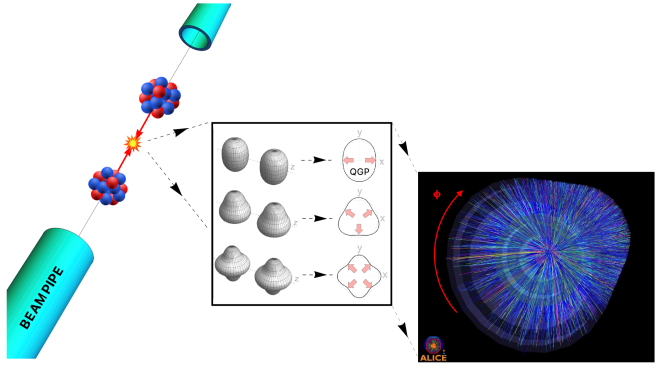INT 23-1a Highlights Report
Intersection of nuclear structure and high-energy nuclear collisions
G. Giacalone, J. Jia, D. Lee, J. Noronha-Hostler

Over the past decade, breakthrough observations from colliders have demonstrated that the scattering of nuclei at high energy works as an imaging process giving access to correlated spatial distributions of nucleons in the ground states of the colliding wave functions. This raises a number of fundamental questions. How can we boost the hot QCD program envisaged at high-energy colliders via a more refined implementation and understanding of nuclear structure in theoretical models? How can our knowledge of the low-energy structure of nuclei benefit from high-energy nuclear experiments? Which new physics questions arise from this connection?
The INT-23-1a program represented an unprecedented, comprehensive effort of the nuclear community to make progress on these issues and thus on our understanding of nuclear physics as a whole. With nearly 100 registered participants, both the communities of high-energy heavy-ion physicists and low-energy nuclear structure physicists were strongly represented. A broad range of topics at the intersection of different areas were discussed, including nuclear structure, nuclear reactions from low to ultrarelativistic energies, the science of the electron-ion collider, physics opportunities from light-ion collisions in future CERN LHC runs. The participants identified connections between such topics and opportunities for future cross-field collaborations.
We are happy to say that, thanks to this program, the two communities are now much closer than they were at the end of 2022.
|
|
